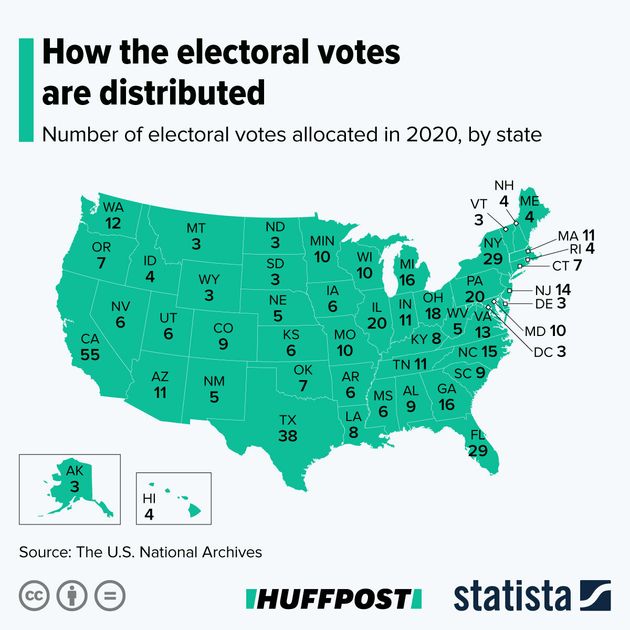It’s the morning after the US election and the only thing we know for certain is that everything is even more confusing and mad than it was yesterday.
With no clear winner in sight and the prospect of waiting days for the final verdict, President Trump has already began to sow doubt about the result, claiming – with no evidence whatsoever – that there’s been a “major fraud on our nation”.
Meanwhile Joe Biden briefly appearing in front of supporters in Delaware, urged patience, saying the election “ain’t over until every vote is counted, every ballot is counted”.
So one thing we do know for certain is the next days are going to be… interesting.

And while everyone debates who could win, there is another scenario that could still plausibly happen – a dead heat. Here’s how that could pan out and what would happen next:
The Electoral College
While Trump and Biden’s names may be on the ballots that millions of Americans have filled in over the last few weeks, voters in the US do not directly elect their president.
Instead, the individual votes in a state are typically reflected in votes cast by electors in the Electoral College, with 270 votes needed to win the seat in the White House.
After a flurry of states reported their results during the early hours of Thursday, Biden was on 224 votes, compared to Trump’s 213, as of 6.40am GMT.
The remaining Electoral College votes leave several routes for either candidate to win the election – or for the poll to end in a tie.

If Biden wins all the states won by then-Democratic nominee Hillary Clinton in 2016, and gains Michigan, Wisconsin and Arizona, both he and Trump would end up on 269 votes.
A tie would also arise if Biden wins everything that Clinton did, plus Michigan and Pennsylvania – after he won one of Nebraska’s five electoral votes.
Biden would end up on 268 votes if he held on to the states won in 2016 in addition to Michigan and Pennsylvania, which would put Trump exactly on 270.
Trump could secure four more years in the Oval Office by holding onto Georgia, Wisconsin, Michigan, and Pennsylvania.
These combined votes would put the current President at 274 votes following his victories in the populous states of Florida and Texas, though it would be a much narrower victory than his 306 votes in 2016.
How it would be decided
If there is a tie, the newly elected House of Representatives would choose the president, with each state delegation having one vote.
A simple majority of states, equivalent to 26 votes or more, would be needed to win.
A tie has not been seen in modern times but the process was implemented in the 1800s, including in the election of 1800 between Thomas Jefferson and Aaron Burr.
The 2020 election is taking place in significantly different circumstances than four years ago due to the Covid-19 pandemic, with millions voting early or via post.
It is feared that some states, including Pennsylvania, Wisconsin, and Michigan, may not report results for potentially days.
The situation is further complicated because even if one candidate wins 270 votes, their path to the White House could still face problems.
While many states have laws requiring electors in the Electoral College to vote in the way that corresponds with the popular vote of the state, others can vote contrary to the public’s decision.
These voters, known as faithless electors, could tip the balance if the winner has a tight margin when they vote on December 14.
Faithless electors have been seen in some elections, including in 2016 when the results at a state level were 304 to 227 in favour of Trump, despite the results being 306-232 at state level.
However, these votes are rare, as electors are typically loyal members of their respective parties, and it is very likely that such a move which alters the result would be challenged.